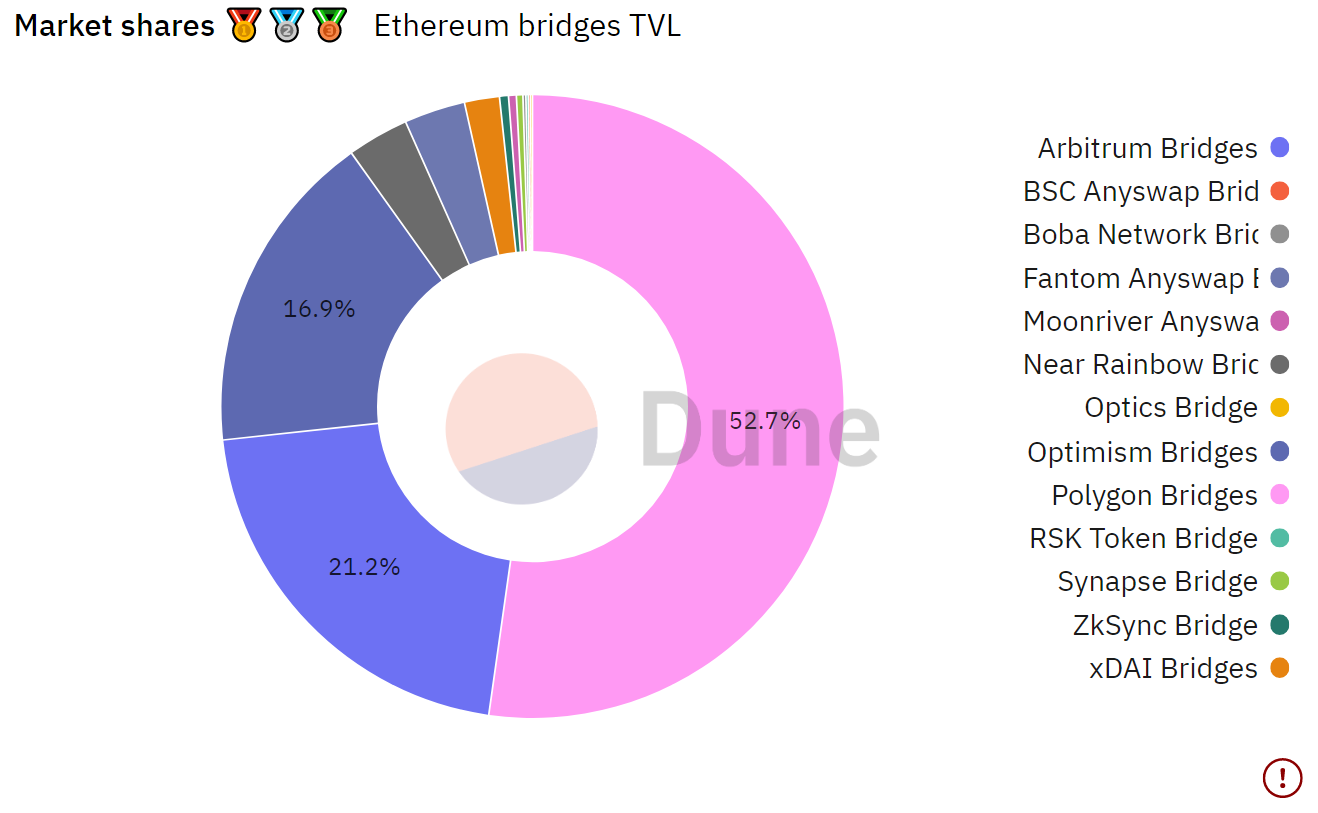The public blockchain sector grew from less than a few million dollars in the last decade to a $1 trillion industry. However, one thing that the space has yet to solve is a decentralized and secure interoperable solution.
Let’s take Ethereum (ETH) to Bitcoin (BTC), the largest blockchain network, for example. Till today, centralized exchanges are the only viable solution for shifting from one chain to another.
A centralized solution provider, BitGo, provides the largest pool of liquidity for Ethereum users to gain BTC exposure via Wrapped Bitcoin (WBTC). The BitGo IOU accounts for over 93.6% of the Bitcoin bridged to Ethereum. Users must rely on BitGo partner platforms like centralized exchanges or CoinList to exchange BTC and WBTC.
The dominance of WBTC exposes it to evident centralization and regulatory risks. RenBTC, a platform managed by Alameda Research, dissolved in December after FTX’s collapse, and the same might happen with BitGo. The recent regulatory crackdown on Paxos for issuing a USD-backed token, BUSD, could also eventually bring services like BitGo into the U.S. SEC’s crosshairs.
The interoperability between smart contract platforms and other application-specific blockchains must also be developed. Sidechains and rollups in Polygon (MATIC), Arbitrum and Optimism comprise 90% of the cross-chain bridge volume from Ethereum. Near’s (NEAR) Rainbow and Fantom (FTM) bridges are the only independent blockchains with a notable total value locked (TVL) on bridges with Ethereum.
 Ethereum market share of bridges by TVL. Source: Dune
Ethereum market share of bridges by TVL. Source: Dune
Several major crypto projects, such as Polkadot (DOT) and Cosmos (ATOM), implemented modularity from the ground up to build a secure and scalable cross-chain platform, with the ultimate goal being to establish an interoperable “network of networks.” However, Cosmos has yet to attract sufficient liquidity to its ecosystem, and Polkadot continues to stay in development.
The issue from bridge centralization
The 2021 hype cycle witnessed the emergence of a “multichain future” where various blockchain host specific functions like but are joined together through interoperable solutions. The first generation of bridges was highly primitive and centralized, eventually making them hot targets for exploits.
The next generation of interoperable solutions operate as separate blockchains to include decentralization and enhance security. These include intermediate transfer tokens like Thorchain’s RUNE. However, the daily volume of transfers via Thorchain has stayed below $20 million, suggesting that it has failed to pick up usage.
Threshold, which introduces a trustless and private portal for Bitcoin on Ethereum, will launch in Q1 2023. It will look to replace centralized providers like BitGo in bridging liquidity between Bitcoin and Ethereum.
Some other protocols focus on the interoperability between smart contract platforms.
LayerZero is an omnichain interoperability protocol that allows the development of applications like DEXes and lending protocols on top of it. These protocols can interact with monolithic chains like Ethereum, Cosmos Hub, and Solana. Stargate is the first DEX built using LayerZero and has a liquidity of $324 million across Ethereum, Polygon, BSC and Avalanche.
Celestia is a layer-1 blockchain built using the Cosmos SDK. The platform does support smart contract execution but is only responsible for ordering transactions and making a blockchain’s data more accessible.
It aims to act as an intermediate layer between Ethereum roll-ups and the mainnet by compressing the roll-up data for faster execution on Ethereum layer-1. Celestia does not verify the block data but helps optimize the gas cost and speed of execution. This capability will extend to layer-1 blockchains like Cosmos, Solana and Avalanche.
The team will run an incentivized test in Q1 2023 to start public testing and reward testnet validators with a potential airdrop of native tokens.
 Celestia testnet incentives announcement. Source: Celestia’s Discord
Celestia testnet incentives announcement. Source: Celestia’s Discord
Related: ‘Multichain future is very clear’ – MetaMask to support all tokens via Snaps
Fuel Labs, the team building Fuel Network, also developed the Fuel Virtual Machine (FuelVM) and Sway programming language, which enhances transaction speed. The team launched its second beta testnet in November 2022, and the public testnet is expected to go live sometime in 2023.
While the interoperable space remains underdeveloped and exposed to centralization risks, various teams are working on decentralized solutions that will launch in 2023. These protocols will securely bridge the liquidity across DeFi protocols and other layer-1 blockchains. On top of that, they will also help build a multichain future, where the user experience would be blockchain agnostic and interact with each other seamlessly.
The views, thoughts and opinions expressed here are the authors’ alone and do not necessarily reflect or represent the views and opinions of Cointelegraph.
This article does not contain investment advice or recommendations. Every investment and trading move involves risk, and readers should conduct their own research when making a decision.


